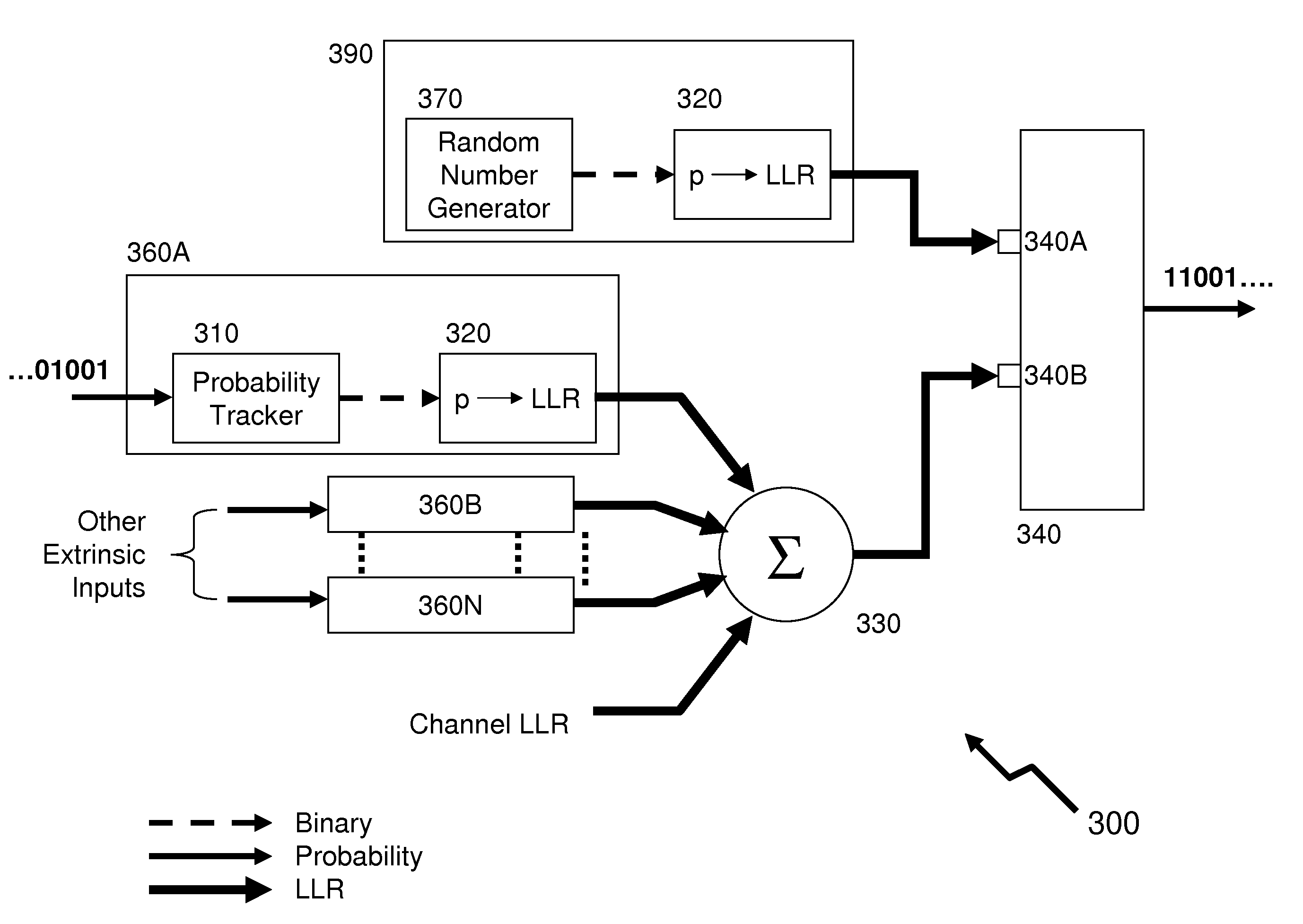Method and system for decoding
a low density parity and code technology, applied in the field of decoding error correction codes, can solve the problems of high overall time complexity, unsatisfactory parity-checks, and the decoding will make much progress
- Summary
- Abstract
- Description
- Claims
- Application Information
AI Technical Summary
Benefits of technology
Problems solved by technology
Method used
Image
Examples
Embodiment Construction
[0043]The present invention is directed to decoding of error correction codes and in particular to a method and system of decoding Low Density Parity Check (LDPC) codes. Within the following description an overview of the encoding and decoding of information on a physical transmission medium is presented together with descriptions of prior art and the issues arising from these that are addressed at least in part by algorithms according to embodiments of the invention.
[0044]Channel Coding:
[0045]Within the following discussions we will consider a physical channel which corrupts the information transmitted, the corruption being modeled through the additive white Gaussian noise (AWGN). A transmission through the AWGN channel can be characterized by a signal-to-noise ratio (SNR), transmissions rate R, expressed in bits / second (b / s), and a bandwidth W, expressed in Hertz. We can then define the spectral efficiency of the AWGN channel as η=R / W b / s / Hz. For a given SNR, it can be shown that,...
PUM
 Login to View More
Login to View More Abstract
Description
Claims
Application Information
 Login to View More
Login to View More - R&D
- Intellectual Property
- Life Sciences
- Materials
- Tech Scout
- Unparalleled Data Quality
- Higher Quality Content
- 60% Fewer Hallucinations
Browse by: Latest US Patents, China's latest patents, Technical Efficacy Thesaurus, Application Domain, Technology Topic, Popular Technical Reports.
© 2025 PatSnap. All rights reserved.Legal|Privacy policy|Modern Slavery Act Transparency Statement|Sitemap|About US| Contact US: help@patsnap.com



